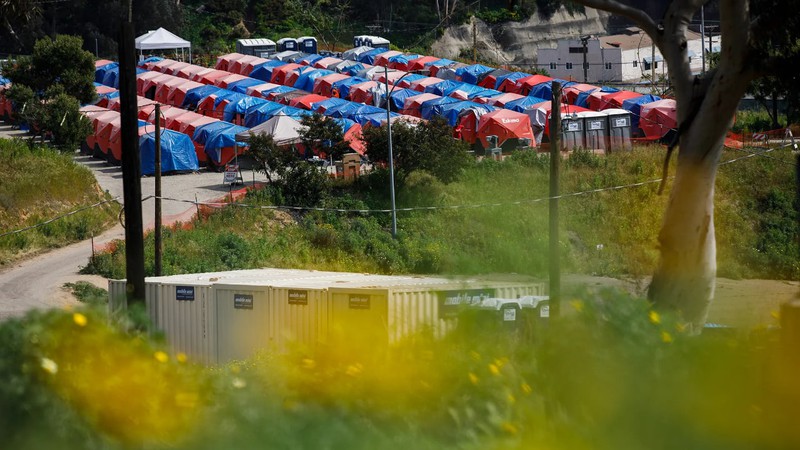
The O Lot Safe Sleeping site at Balboa Park in San Diego on March 22, 2024. Photo by Kristian Carreon for CalMatters
A new bill would make it illegal for homeless residents to camp in certain places, such as near schools, throughout California. Its authors say such a ban has had great success in San Diego. But a closer look at that city paints a more nuanced picture.
Politicians pushing to make homeless encampments illegal across wide swaths of California point to one city as proof it will work.
“San Diego gets it,” Senate Republican Leader Brian Jones said during a recent press conference. “They are having great success so far with their ordinance, and we hope we can take that success across the state.”
Jones’ proposal, Senate Bill 1011, is modeled after a controversial new San Diego ordinance that bans encampments near schools, shelters and transit hubs, in parks, and even, if shelter beds are available, on all public sidewalks.
But how well is San Diego’s “Unsafe Camping Ordinance” really working?
While encampments are much less noticeable in some areas — such as downtown, in the city’s main park, and around certain schools — they’re just as prevalent, if not more so, near freeways and along the banks of the San Diego River.
The city’s homeless shelters are full, often with no beds for people who want to avoid a citation. There’s no evidence the city’s overall homeless population has decreased in the eight months since enforcement started.
Still, Jones is banking on the fact that Californians are fed up with the state’s current approach. Despite Gov. Gavin Newsom’s administration spending an unprecedented $24 billion on housing and homelessness over the last five years, encampments are rampant throughout the state.
“We simply cannot continue allowing people to live in or around our schools, transit stations and open spaces,” Jones said. “This is a public health and public safety crisis. It’s inhumane and it’s unhealthy for our state to continue looking the other way.”
Jones’ bill would make camping within 500 feet of a school, open space or major transit stop a misdemeanor or infraction, no matter what. Additionally, it would ban camping on a street or sidewalk if a homeless shelter is available.
A similar bill authored by Jones died an early death last year. San Diego’s ban hit a tidal wave of opposition from the get-go, and barely passed with a 5-4 City Council vote. Enforcement began July 31.
This year, Jones, who represents San Diego and has secured three Democratic co-authors, is leaning heavily on favorable outcomes in San Diego to get his bill over the finish line. It’s scheduled for its first committee hearing this month.
But the part San Diego Mayor Todd Gloria is most proud of — opening two giant tent campsites where people can sleep legally — isn’t replicated in Jones’ bill. Cities wouldn’t be required to come up with places for people to go.
CalMatters.org is a nonprofit, nonpartisan media venture explaining California policies and politics.
Articles which extol the virtues of a report or article put out by a local newsroom.